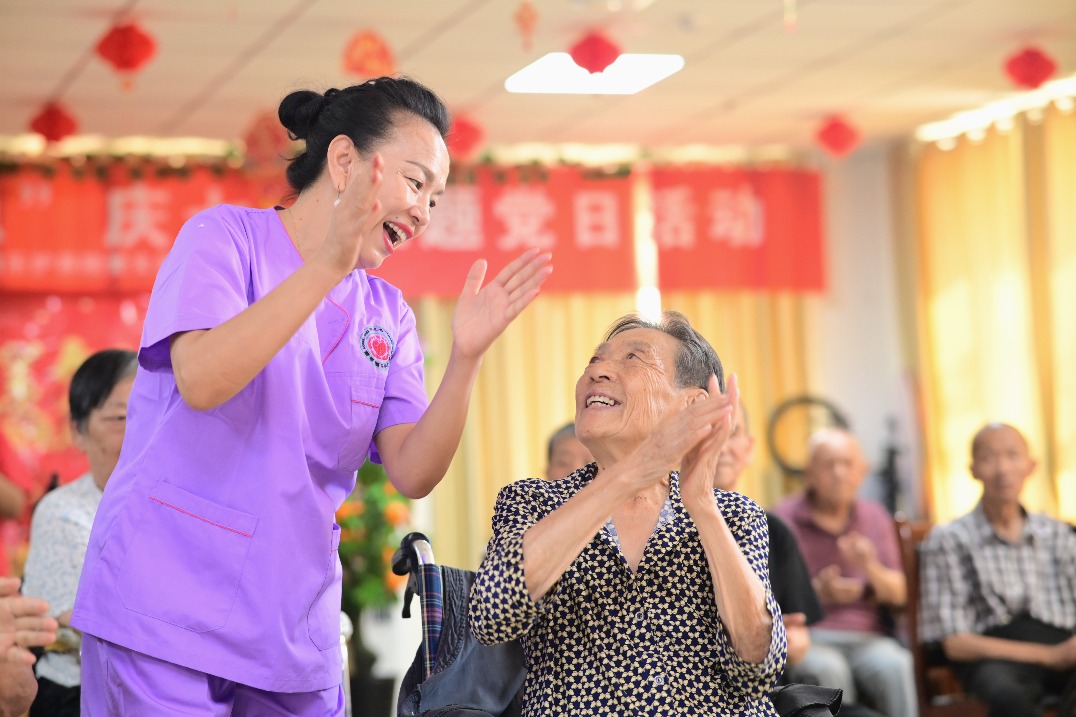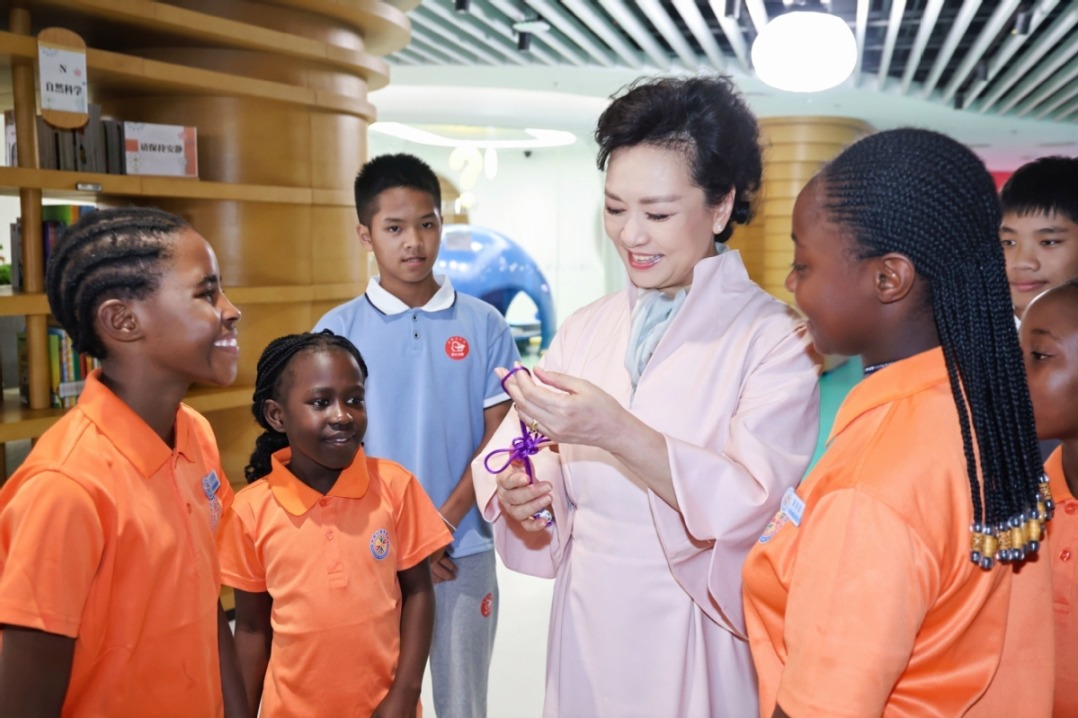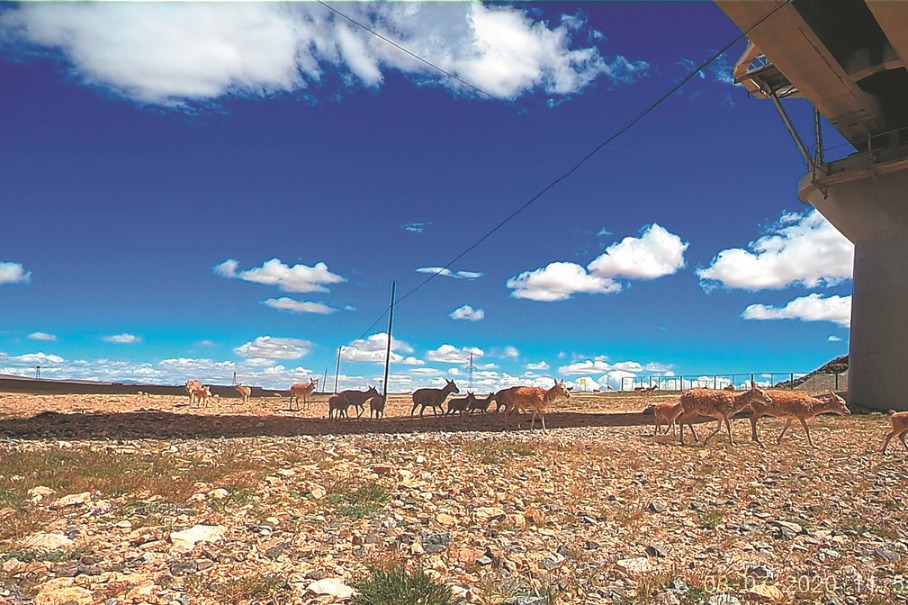Belt, Road progress to strengthen globalization, win-win cooperation
By Fan Zhiyong | China Daily | Updated: 2024-07-22 09:29

In 2013, China launched the Belt and Road Initiative, a visionary project aimed at promoting connectivity and cooperation among countries along the ancient trade routes of the Silk Road.
At its inception, some foreign voices raised concerns, questioning whether the initiative was merely a temporary measure to address China's domestic overcapacity and excess production.
However, in response to these doubts, China has remained committed to cooperation with economies involved in the BRI, striving for policy coordination, infrastructure connectivity, trade partnership, financial integration and people-to-people bonds.
Over the past decade, the BRI has made significant progress, winning increasing trust from participating countries and regions.
At a time when some Western countries are using national security concerns as a pretext to promote decoupling from China, it is intriguing to observe an increasing number of nations, particularly developing countries, actively embracing the BRI and strengthening production cooperation with China.
This trend raises the question — why are these countries choosing to collaborate with China rather than replace China to become the new global manufacturing hubs as originally expected?
On the eve of the European Union imposing punitive tariffs on Chinese electric vehicle exports, Hungary and Poland, themselves both EU member states, engaged in high-level meetings with Chinese leaders.
During these visits, leaders from Hungary, Poland and China reached a broad consensus on strengthening economic and trade exchanges within the framework of the BRI. These countries are actively seeking to collaborate with China to further enhance their manufacturing capabilities and become regional and global manufacturing centers for the new energy vehicle sector.
China's economic and trade relations with Hungary have deepened significantly in recent years, with China consistently being a major investor in both Hungary and Central and Eastern Europe overall. China has thus emerged as the leading source of foreign investment in Hungary.
China's direct investments in Hungary soared to 7.6 billion euros ($8.27 billion) in 2023, making up 58 percent of the total foreign direct investment attracted by Hungary. This surge was buoyed by the growing presence of Chinese high-tech new energy enterprises within Hungary's investment landscape.
Chinese lithium-ion battery makers such as Contemporary Amperex Technology Co Ltd, BYD, EVE Energy and Sunwoda Electronics have set up operations in Hungary.
In 2022, CATL made a groundbreaking investment in Hungary, with a staggering amount of 7.34 billion euros, which not only represents CATL's largest overseas investment to date, but also stands as the largest single investment ever recorded in Hungary.
The move is set to propel Hungary to become a significant center for battery manufacturing and reinforce its position as a key player in the European market.
Meanwhile, EV manufacturer NIO has commenced operations at its first overseas factory in Hungary, while BYD has announced plans to establish a new energy passenger vehicle production base in the country.
During his visit to China in June, Polish President Andrzej Duda delivered a speech highlighting Poland's warm welcome to Chinese investment and specifically mentioning the potential for cooperation in areas such as new energy, EVs and other innovative technologies.
Duda's address conveyed Poland's strong desire to deepen economic and trade cooperation with China, showcasing the numerous advantages of Poland as an investment destination, including a stable political environment, favorable investment policies and robust investment protection mechanisms.
The BRI has garnered significant recognition and support not only in Central and Eastern Europe, but also across a vast array of Latin American nations.
During Peruvian President Dina Boluarte's visit to China in June, she said that the BRI offers opportunities to help close the existing infrastructure gap in the country. Peru is interested in exploring new forms of cooperation under the BRI and realizing win-win cooperation between the two sides.
Prior to her visit, Peru had asked a judge to withdraw its request to revoke exclusive operating rights from China's COSCO Shipping Ports for the Chancay megaport.
China and Peru's collaboration extends beyond a singular port, as both countries aim to establish a transcontinental transport network that connects the Pacific and Atlantic oceans through the construction of transportation infrastructure.
This joint effort, involving China, Peru and other Latin American countries such as Brazil, seeks to bridge the Andes Mountains and create a transportation network that not only positions Peru as a manufacturing and trading hub along the Pacific coast of Latin America, but also integrates Brazil and other countries into the Asia-Pacific economic circle, fostering cooperation and mutual success among South-South nations.
In contrast to the traditional global industrial chains dominated by Western countries, China's collaboration with countries involved in the BRI is not about turning them into destinations for absorbing China's excess production capacity or making them mere links in China's industrial chain.
Instead, the focus lies on fostering cooperation and joint development, enabling participating countries to achieve endogenous growth. This approach allows these countries to develop their own capabilities and drive sustainable growth, while China benefits from providing industrial upgrading services to these BRI countries.
In the era of economic globalization, China has actively and proactively integrated itself into the global value chains constructed by developed countries, steadily moving up the value chain.
However, as China's economic stature continues to rise, some Western countries, citing de-risking as a justification, are attempting to exclude China from the global economic cycle. This trend highlights an inherent paradox in the integration of developing countries into global value chains dominated by developed nations.
In the pursuit of economic development and upward mobility within the global value chains, a developing country's success in elevating its position is often met with resistance and exclusion from developed nations. The closer a country gets to the higher end of the value chain, the stronger the pushback it experiences from established players in the global economy.
Developing countries that fail to achieve upward mobility within the global value chains are at risk of being replaced by countries with lower production costs, potentially condemning them to remain trapped in the middle-income or even low-income category indefinitely.
Developing countries worldwide are increasingly recognizing that the Western-led global value chains may not represent their ultimate destination. As a result, these countries are actively exploring new and alternative development strategies to chart their own path to economic progress and prosperity on the global stage.
These developing nations harbor dreams and aspirations of industrialization, urbanization and achieving economic self-reliance. Through multilateral cooperation among countries involved in the BRI, they are formulating development plans tailored to the needs of these regions.
Leveraging China's manufacturing capabilities and vast market advantages, this collaborative effort aims to uplift the industrialization levels of BRI countries, injecting fresh vitality into global economic development. This vision is gaining consensus among an increasing number of nations.
The writer is a professor at the School of Economics, Renmin University of China.
The views don't necessarily reflect those of China Daily.
























